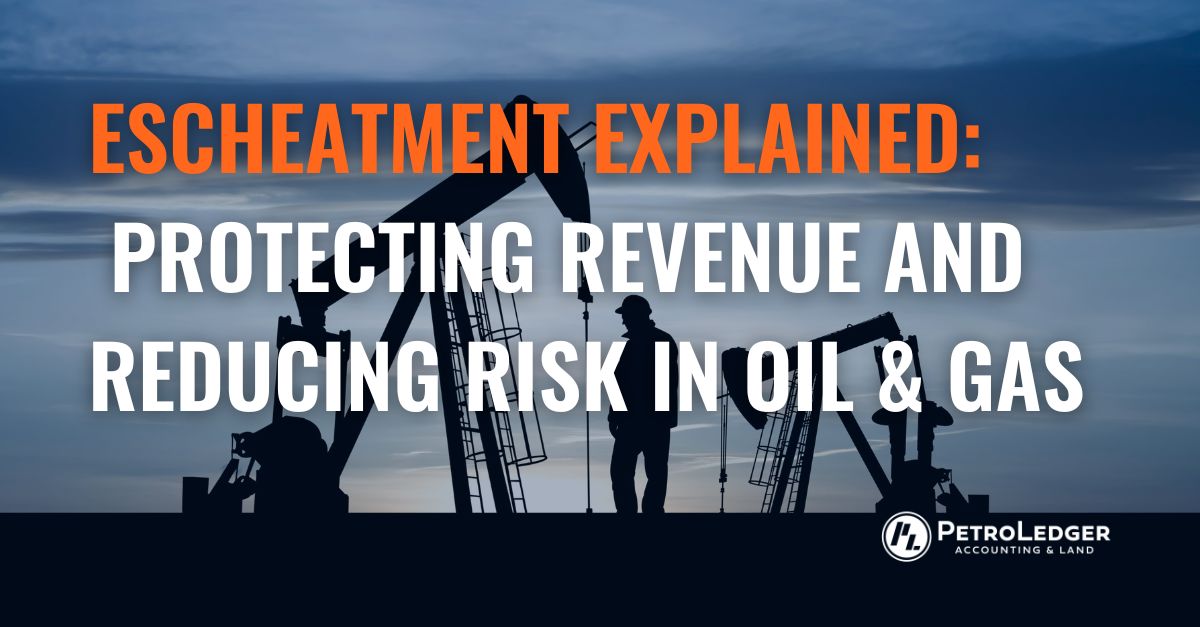
Why Natural Gas Isn’t So Simple: Inside the World of Gas Balancing

Picture this: your exploration and production teams are hunting for molecules of natural gas thousands of feet below the surface of the Earth, capturing them and lifting them out of the ground to be sold to an end-market buyer, yielding the best price. Everything is going great and business is booming, but wait – some of your investors (working interest owners, royalty owners, overrides, etc.) are wondering why their end market values are different than other owners of the same gas from a well.
Now what do you do? How do you correct this inconsistency between investors? This is where gas balancing comes into play. It is required to fix the disconnect that happens between joint owners of your natural gas production.
Keep reading to learn more about natural gas production imbalances and how gas balancing can correct those discrepancies.
What Causes A Gas Imbalance?
Imbalances can be caused by a variety of factors. Below are just some of the more common reasons, and not all of them are easy to resolve.
Production variability: Natural gas output can fluctuate due to weather, equipment malfunctions, or shifting market conditions. When actual production doesn’t align with the volumes outlined in sales contracts, an imbalance occurs.
Metering inaccuracies: If the meters on your wells are faulty, tracking gas volumes doesn’t reflect the true amount produced or delivered, and discrepancies arise.
Fuel loss in transit: As gas moves through pipelines, a small portion is used as fuel or lost in transport. This means the volume delivered is slightly less than the amount received.
Joint ownership imbalances: In wells with multiple owners, differences occur when one owner takes more gas than their proportional share, or when gas usage doesn’t match scheduled deliveries.
Inaccurate reporting: Inaccurate record-keeping in well ownership decks, production reports, and/or marketing statements leads to a failure to reconcile.
Fixing An Imbalance
As the operator, it is your responsibility to solve any imbalances that are occurring so your investors are receiving what they are due, as stated in their agreement. Depending on how the imbalance happened, that will determine how you resolve any imbalances.
If an Operator is out of balance based on actual physical volume discrepancies, they can get back in balance in two ways. Firstly, they can make a cash settlement to their investors based on the historical out-of-balance volumes times a weighted average sale price. The second way is via a True Up, where future production volumes get the accounts back to level.
If the imbalance occurs due to faulty equipment or inaccurate reporting, those issues will need to be solved as well to ensure that the imbalances do not continue.
ACCOUNTING FOR “SALES” OR “ENTITLEMENT”
Tracking each working interest owner’s actual sales volumes requires the revenue and accounting teams to record all sales data, both volumes and values, including any necessary adjustments. This process ensures that the operator books only true sales, without overstating or understating production due to overdeliver or underdeliver.
When an operator follows the entitlements method, they record volumes and revenues strictly according to each owner’s ownership percentage. Any difference between the entitled and actual volumes is recorded separately in an imbalance account, categorized as either a receivable or payable, and monitored on a monthly basis.
How Can PetroLedger Help?
Keeping books balanced and joint interest owners satisfied is a lot to manage on top of all the field work you are already doing as an operator – so why not let us lighten the load?
Our team of experts in all things oil and gas accounting, land administration, and much more in the energy realm, can act as your back office with as much (or as little) as you need to keep operations running smoothly — all at a significant cost savings over hiring full- or part-time staff.
Want to know more? Speak to one of our amazing professionals today!
related articles







